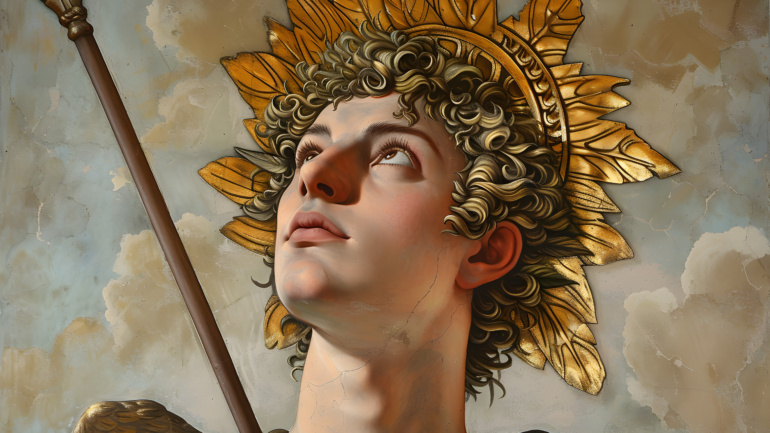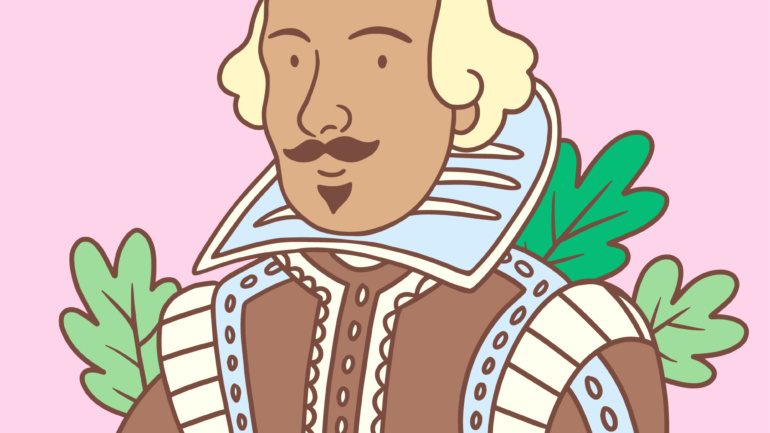Today, we continue exploring the Northern Renaissance through the works of Jan van Eyck, offering you an interpretation of the extremely detailed aesthetic concept characteristic of this period.
Northern Renaissance: Details Make the Difference
- With today’s various advanced technologies, when we see meticulously crafted animated films, we marvel at the fine details of the animated characters, even down to the lip movements. In fact, 600 years ago, “lip synchronization” was already a special skill of the Northern Renaissance. The representative masterpiece of this skill is Jan van Eyck’s The Ghent Altarpiece, a painting that embodies the extreme precision of Northern Renaissance painting techniques. Mastering the appreciation of this work means you’ve grasped the essence of the Northern Renaissance.
- Jan van Eyck (1386-1441) was a representative artist of the Northern Renaissance. Besides being called the “father of oil painting” for his improvements in pigments that popularized oil painting, his most important contribution was the way his works concentrated the aesthetic principles of the Northern Renaissance, demonstrating an extreme attention to detail in depicting scenes, making his detailed portrayals truly awe-inspiring.
- Regarding the extreme detail of the Northern Renaissance and Jan van Eyck’s outstanding representative works on this, the one you need to carefully appreciate is The Ghent Altarpiece. At first glance, this might seem like a typical religious-themed painting depicting religious ceremony scenes with figures like Jesus, a choir, clergy, and the Lamb of God. However, the true value of this painting lies not in the ceremonial scene but in the depiction of the choir.
- In The Ghent Altarpiece, the lip movements of the two rows of the choir are different. Logically, during a solemn religious ceremony, the choir should be singing the same piece, but in this painting, the lip movements are not synchronized. What is actually depicted here is a crucial technique in musical composition—counterpoint. This is a highly advanced compositional technique, different from harmony, where different pitches and lyrics are sung independently but harmoniously. In the painting, the choir members are singing a contrapuntal piece, which is why their lip movements are not identical.
- Counterpoint, as a compositional technique, utilizes displacement to enrich the musical imagery, creating dramatic tension and a back-and-forth effect. Jan van Eyck, while presenting a religious ceremony scene, could have completely ignored the changing developments in music at the time without affecting the interpretation of the theme. However, he adhered to the Northern Renaissance principle of extreme detail in painting, not only perfectly interpreting the painting’s theme but also presenting a historical snapshot, allowing future generations to appreciate the high level of musical development during the Renaissance. From this perspective, we can’t help but be amazed by Jan van Eyck’s meticulous technique.
- Another detail in The Ghent Altarpiece is the 42 different types of flowers depicted in the painting—not too many, not too few. The number “42” holds significant meaning in Christian culture, symbolizing the meaning of life. “42” frequently appears in the Bible in various direct or indirect forms, such as the 42 generations of Jesus’ ancestors and the 42 months the Beast will dominate the earth. To align with the religious theme, Jan van Eyck carefully arranged this seemingly insignificant detail, illustrating his unwavering commitment to “extreme detail.”
- Jan van Eyck’s dedication to detail also helped him “brush his presence” in his works. In another religious-themed painting, there is a figure in armor, Saint George, a figure akin to the Chinese “Guanyin” in Western Christian culture. The most interesting detail in this painting is that on the armor of this “Guanyin” figure, in a very inconspicuous place, the reflection of a person wearing a red headscarf can be seen. This person is none other than the artist Jan van Eyck himself. By using this detail, he “signed” his painting, not only adhering to the spirit of the Northern Renaissance but also demonstrating the humanist spirit of the Renaissance, which emphasized the artist’s position and the “presence” of art.
- We can imagine that without the obsession with detail, we might not have had a master like Jan van Eyck. Without his adherence to the principles of the Northern Renaissance, using detail as a way to “sign” his work, we wouldn’t have the famous and respected works and artists we admire today. The greatest insight the Northern Renaissance gives us is that details make the difference. The pursuit of detail, in essence, is the spirit of the Renaissance itself.

The Ghent Altarpiece – Full View

The sacrificial scene in The Ghent Altarpiece, where the number of flower species is exactly 42.

The Ghent Altarpiece – Detail
The lip movements of the choir members are not the same because they are singing a contrapuntal musical work, showcasing the artist’s meticulous attention to detail.

Jan van Eyck’s Religious-Themed Painting – Full View

Jan van Eyck’s Religious-Themed Painting – Detail
In the red-marked area, you can see the reflection of the artist on the armor.

Jan van Eyck’s Self-Portrait
Tip
Paying Attention to Detail Reflects the Spirit of the Renaissance
If someone says you’re being too picky, you can bring up the spirit of the Renaissance. For example, if you’re the client and the contractor is upset about your attention to detail, you can refer to The Ghent Altarpiece, explaining the difference in lip movements and the use of counterpoint as an example. Tell them that the pursuit of detail is a reflection of the Renaissance spirit.


